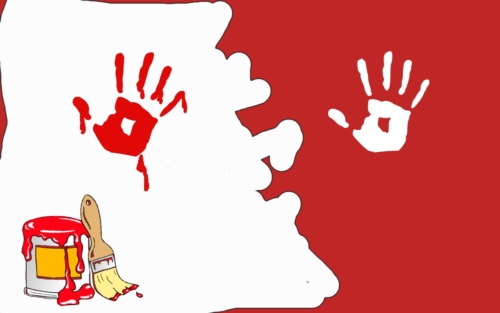Forensic Terminology, Illustrated
It’s been said that a picture is worth a thousand words, so this is me with too much time on my hands.
Forensic Terminology
External Ballistics – characteristics and behavior of a bullet after it leaves the muzzle of a firearm, but before it strikes an object/its target.

External Ballistics
Jacketed bullets – lead bullets that are encased either partially or completely in copper or a similar alloy. The term “full metal jacket” refers to complete jacketing of a bullet.

Jacketed bullets

Negative Impression
Cast-off – occurs when an object is swung in an arc, tossing blood onto nearby surfaces. For example, when a killer swings a bloodstained hammer back and forth above his head while delivering blow after blow to the body of his victim. The blood sent airborne as a result of the hammer’s motion is “Cast-off.”

Cast-off
Barefoot Morphology Comparison – A forensic application that uses the impressions of the weight-bearing areas of footprints left at crime scenes to include or exclude suspects in an investigation.

Barefoot Morphology Comparison

Forensic Musicologist

Equivocal Death
Welcome to MurderCon
It’s a killer event that features renowned experts who train top homicide investigators from around the world.
Writers, please take advantage of this opportunity to learn from those who are the best in the business of crime scene investigation. I say this because this incredible event may not come your way again.
Sign up today while there’s still time.
*2021 Guest of Honor – Andrew Grant
Click the play button below to view the video.





Not only fun but useful — thank you!